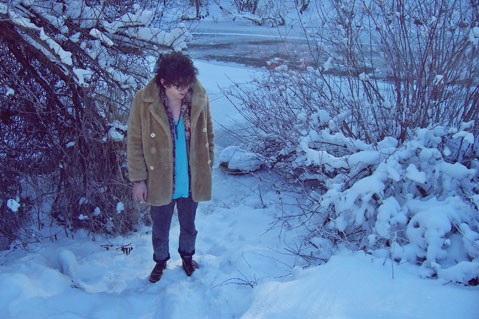The Curious World of Youth Lagoon
Trevor Powers Talks Life, Death, and Musical Exploration

When the world stumbled upon Youth Lagoon in 2010, it quickly met Trevor Powers. Introduced as “the introverted 22-year-old from Boise,” Powers and his record, The Year of Hibernation, were touted as introspective, innocent, and nostalgic, but that was only part of the appeal. As Youth Lagoon, his penchant for memorable melodies, thoughtful (albeit mumbled) lyrics, and affectionately lo-fi templates made Hibernation — and its indie-pop tropes — feel altogether new.
As the follow-up, Wondrous Bughouse seems dead set on shirking expectations. Here, Powers’s thin, affecting voice remains the constant, while fantastic and at times whimsical soundscapes come to life around it. If Hibernation was his quiet record about staying inside, Bughouse is its counterpoint: an album about voraciously exploring the world and coming back awestruck. This Thursday, Youth Lagoon makes its Santa Barbara debut at SOhO Restaurant & Music Club. Below, we chat with Powers about the story behind Wondrous Bughouse.
I know you recorded with, and are now touring with, a full band. Was that something you knew you wanted to do from the outset of the writing process for Wondrous Bughouse? For the recording process, there were all kinds of additional ideas I wanted to incorporate. One person in particular I wanted to be a part of the process was my brother-in-law, who I have always connected to personally and musically. Another important element on this record was the way I wanted drumming approached. Ben Allen, who I was working on the record with, knew a drummer that lived down the street from the studio, same with a cellist who lived in L.A. that we sent the tracks to. It’s always difficult to communicate what you want to people you don’t know, but it just takes patience. And it adds this sort of majestic feeling to something. After the record was finished, I had auditions for live players, and as soon as I found them, tour rehearsals began.
With extra players at your disposal, what were your main goals? Were there certain sounds and instruments that you knew you wanted to play up? I don’t see one instrument as ever being a main role on this record. That was essentially a goal — and to create a sort of existence sonically where instruments don’t always sound like instruments. I have a lot of fun turning things into something they’re not supposed to be.
With the success of The Year of Hibernation, were there expectations that you placed on yourself going into the new record? There’s always this line walked by artists to create art or create commerce, and I can’t understand it. One always supersedes the other. For me, I create for myself, just to speak. I would speak through other forms of art, but I don’t know how.
What (if anything) do you do to avoid those outside pressures, expectations, etc.? Delight in the negative opinions because it means you’re probably doing something right.
In talking about this record, you’ve mentioned death and your relationship with it as playing a big part in the writing process. Why do you think this was the time to tackle some of those concerns? I don’t think it is time. I don’t think it’s ever the time, because physical mortality is not a concern. It’s our existence. It’s reality. It’s here. It’s now. It’s everywhere I look. It’s everywhere people try not to look. That is why it is fascinating.
Can you tell me about the story behind “Dropla”? It was inspired by watching a friend die in a hospital room. Immortality is the pinnacle of what humanity strives for, but that idea would destroy the meaning of existence.
Would you attach an overarching theme (or themes) to Wondrous Bughouse? It’s interesting how this record came together because all the focus was put on the pieces instead of the whole. But because of that, everything fit together better than I could have imagined. When you finish a record and take a step back, you instantly forget how it even happened. Wondrous Bughouse was this mentality of having one foot in a physical reality and the other in the metaphysical. A lot of my writing has been like that lately, observing the Creator through the creation.
What’s the story behind the album’s artwork? I found this German book called Rausch Im Bild that was [about] research on drug patients in the 1970s. It was essentially paintings and drawings done under observation. A few of these I felt a strong bond to. They were by a woman named Marcia Blaessle. I researched her for a long time and could not find anything out about her, and the publishing company that released the book had folded. After a few months of looking into it and tracking down sources, the rights to the images was were approved.
Over the last few years you’ve expanded Youth Lagoon from a solo project to a two-piece to a four-piece band. Do you feel that stepping into the role of bandleader has changed your approach to songwriting? No, it hasn’t. But I think my approach to songwriting changes every day for other reasons — mainly curiosity. That and never being content with music.
How have the live shows (and the preparations for tour) changed in the last few months? There is so much that has been put into the live preparations for this record cycle. It is much more of a production, and I mean that in the best way possible.
4•1•1
Youth Lagoon plays SOhO Restaurant & Music Club (1221 State St.) on Thursday, April 18, doors 7 p.m./show 9 p.m., with opener Majical Cloudz. For tickets and info, call (805) 962-7776 or visit clubmercy.com.



